

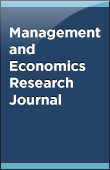
10.18639/MERJ.2020.1124819
Short Communication
Sep 07, 2020
Due to disruptive changes such as COVID-19, universities can no longer afford to tackle these turbulent forces solely. In today’s hyercompetitive environment, companies that want to compete in the future understand that the status quo will not do. According to Accenture, 76% of business leaders surveyed agree that current business models will be “unrecognizable” in the next 5 years. Businesses that attempt to move forward against the backdrop of uncertainty and unpredictability with little or no partnerships will find it difficult to be successful. In this short communication, researchers examine how to build strategic alliances in a disruptive world marked by uncertainty and unpredictability, given the impact of COVID-19.
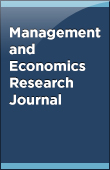
10.18639/MERJ.2020.9900023
Review Article
Aug 31, 2020
Special Issue S5: “BRICS: The Emerging Block”
The aim of this article is to summarize the purpose why BRICS emerged and how it has been affecting the economic performances of the member countries and the world economy itself as well. The reason why India is chosen as the case country to work on rest of the fact that India after its independence has recorded a very interesting growth on the economic level and particularly after its BRICS membership. This article analyzes what kind of a position India has taken and would take furthermore in such an economic platform that the world now presents for the countries. This article searches for an answer to the question stated in the title using the quantitative and qualitative methods and has obtained clear results. It is argued that BRICS is a very important support for the Indian economy and that the economies of developing countries can escape from the hegemony of the capitalist Northern industries, thanks to regional integrations such as BRICS. Therefore, this article has an aim to recover the economic performance of the country that was recorded before the membership to BRICS and see what happens after that.

10.18639/MERJ.2020.9900021
Original Research Article
Aug 06, 2020
The aim of this study was to find out the factors affecting customer satisfaction in teleshopping. Researchers hypothesize that perceived value, convenience, and product variety have positive effect on customer satisfaction in teleshopping. The survey was done using convenient sampling from the region of Noida, Uttar Pradesh, India. Sample consisted of 150 respondents of Noida. The data were analyzed using multiple regression analysis. Results suggested that convenience is the only factor that significantly affects the customer satisfaction in teleshopping. The research suggests that product variety available and perceived value show correlation but does not significantly affect customer satisfaction in teleshopping. The research was useful for TV channels like NAPTOL BAZAR as it proves that customers order products from them just because of the convenience they are getting in return. This study is one of the first, at least to the author’s knowledge, to empirically examine and confirm the effect of convenience, perceived value, and product variety on customer satisfaction in teleshopping.
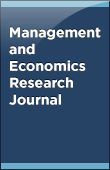
10.18639/MERJ.2020.9900018
Original Research Article
Jul 31, 2020
The aim of this study was to examine if there is an effect of openness to experience on green purchase behavior. Furthermore, the study also aimed to analyze if the attitude toward advertisement and green product knowledge mediates the relationship between openness to experience and green purchase behavior. The data for this study were collected in front of malls and departmental stores of Delhi-NCR (National Capital Region) with the help of survey method. The population consists of both the purchasers and non-purchasers of green products. Two hundred and fifty people participated in the study, out of which 200 questionnaires were used for data analysis after cleaning the data. To test the hypotheses, hierarchical multiple regression was conducted using model 4 of Process Macro. The findings of this study indicate that openness to experience strongly predicts green purchase behavior but no mediation effect of green product knowledge and attitude toward advertisements are seen. This study finds its importance in the fact that there has been a rise in the environmental concerns which may induce consumers to indulge into green purchase behavior. This study is one of the first, at least to the authors’ knowledge, to empirically examine and confirm the effect of openness to experience on green purchase behavior as well as check the mediation effect of green product knowledge and attitude toward advertisement.
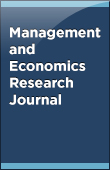
10.18639/MERJ.2020.1119826
Original Research Article
Jul 22, 2020
The aim of this study is to determine the impact of green human resources management (GHRM) practices on organizational excellence in higher education institutions in Duhok governorate, Kurdistan region. Descriptive and analytical methods were used in this study. GHRM practices (green recruitment and selection, green reward management, green performance appraisal, green training and development, and green career management) were considered as independent variables and organizational excellence was considered as dependent variable for this study. The primary data used in this study were obtained from a structured questionnaire distributed to examine university staff. Seventy-three valid questionnaires have been collected and analyzed. The findings of the research showed that there is a positive correlation between GHRM practices and organizational excellence. Career management has the strongest relationship with organizational excellence and their correlation coefficient is 0.391. Performance appraisal has the lowest value among the independent variables but the correlation is positive (0.302).
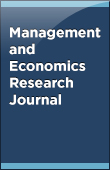
10.18639/MERJ.2020.9900013
Original Research Article
Jul 03, 2020
In knowledge economy there is a shift from industrial work to innovation work. This study examines the influence of soft skills and emotional demands–abilities fit on innovative work behavior among Masters of Business Administration (MBA) students. In a cross-sectional survey, we purposely selected 130 MBA students working in various types of organizations. Data were collected by using structured psychological scales. Detailed data analysis was carried out using statistical techniques: Pearson moment correlation coefficient and multiple regression analysis. Both soft skills and emotional demands–abilities fit jointly accounted for 38.7% of the total variation in innovative work behavior. Soft skills and emotional demands–abilities fit showed independent statistically significant prediction on innovative work behavior. The findings have implication for human capital soft skills as essential in knowledge economy. Furthermore, fit perceptions expect that emotional demands of work match the skills and abilities of the human capital. Recommendations were made in line with management and sustainability development goals.
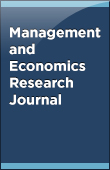
10.18639/MERJ.2020.9900017
Original Research Article
Jun 11, 2020
India and Japan are engaged in a strategic and comprehensive economic partnership. However, some major powers have different interests that may delay the conclusion of the Regional Comprehensive Economic Partnership (RCEP). India and Japan were among the 14 countries that initially joined the RCEP, but India has since opted to stay out, pending resolution of outstanding issues. This study aims to examine the India–Japan strategic partnership in the development of the RCEP and measure the saving potential of the India–Japan Comprehensive Economic Partnership Agreement, employing an ex-ante analysis with scenarios based on zero tariffs. These political and economic partnerships play an essential role for both countries at the regional level. India and Japan have good economic and political relations that could enhance the feasibility of India rejoining the RCEP. The results of the saving potential analysis show that both countries have gained benefits from the economic partnership.
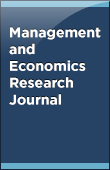
10.18639/MERJ.2020.9900016
Short Communication
Jun 03, 2020
Special Issue S5: “BRICS: The Emerging Block”
Brazil, Russia, India, China, and South Africa (BRICS) have made a tremendous economic impact on the world. Through the New Development Bank (NDB) and the Trade Facilitation Agreement (TFA) by the World Trade Organization, they have become stronger. This article made use of different views to discuss the implication of the NDB and TFA on BRICS. No empirical analysis was carried out. From the viewpoints of other scholars, the Trade Ministers of the BRICS and the World Trade Organization, the NDB and TFA can enhance intellectual and economic growth in the BRICS countries.
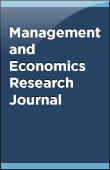
10.18639/MERJ.2020.1109923
Case Study
May 29, 2020
This case study examines the disruptive nature of Google’s strategy in the marketplace to assist researchers and practitioners in future endeavors. From this research analysis, Google has been able to exploit its strengths of being an industry leader by way of new products as well as by the open lanes of communication of its flat organizational structure, which allows for creativity and design. Not all of the products have been winners, but that must not be a deterrent to the future progress of the company. This research is significant because Google’s competitors may obtain additional information to level the playing field, thereby dethroning Google’s superiority in the market.
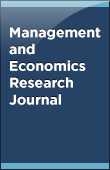
10.18639/MERJ.2020.9900019
Book Review
May 29, 2020
Not applicable.
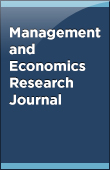
10.18639/MERJ.2020.9900004
Original Research Article
May 15, 2020
This study was carried out to report on the factors promoting nursing students’ stress and their strategies to cope up with the stress situation. Questionnaires were manually distributed to first-year, second-year, third-year, and intern students to check their stress level. The sample was composed of 75 nursing students. Items were rated on a five-point Likert Scale. Stress among nursing students and interns was measured using the Perceived Stress Scale (PSS) and Coping Behavior Inventory (CBI). The researchers also gathered data through open-ended questions from 18 intern nursing students. These students were at the completion of their course. This study addresses key issues that will be of interest and benefit to nursing schools that want to tackle and remove the problems of stress among nursing students. It discusses the importance of providing a good environment to students promoting a favorable study experience. This experience may be enhanced by assigning different duties to different departments, which would help in the development of their multitasking skills. This would not be possible without enough support from colleagues and teachers.
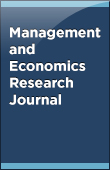
10.18639/MERJ.2020.1075592
Review Article
May 08, 2020
Special Issue S5: “BRICS: The Emerging Block”
The multipolar cooperation between Brazil, Russia, India, China, and South Africa (BRICS) countries seems to be a significant development in the current phase of restructuring of globalization. This article explores the relationship between the emerging radical readjustment of the world hegemony equilibrium with the past and future dynamics of the global socioeconomic system. It examines the relation of the ongoing institutionalization by the BRICS with the established international institutions and the relation of BRICS to the promotion of global economic development. After presenting a structured interpretation of the actual emergence of a “new globalization,” the article focuses on the aspects of BRICS evolution and dynamics that contribute to the discussion of the rise of a more balanced and more democratic multipolar global regime. It notices that multipolar cooperation at the international level should be more democratic as the BRICS claim, although these countries (China and Russia, in particular) face increasing concerns for their liberal rights and democratization domestically. In conclusion, it seems that a new and relatively stable global system now requires a repositioned conception of capitalism as an evolutionary socioeconomic phenomenon, in which innovation is the central and predominant organic process within all organizations.

10.18639/MERJ.2020.9900005
Original Research Article
Apr 30, 2020
Special Issue S5: “BRICS: The Emerging Block”
The Chinese bond market is the second largest in the world. However, studies on Chinese bond markets are very few, and especially there are no studies on foreign investments in the Chinese bond markets. This study fills the gap in the academic literature by focusing on foreign investments in the Chinese bond markets. By using the least-squares model with breaks, this study finds that although, in theory, the factors of exchange rate, yield spread, and yield correlation should play a significant role in attracting foreign investors to invest in the Chinese bond markets, the specific effects depend on the stage of the Chinese bond markets’ open-up. Initially, the main foreign investors are central banks and similar institutions, and they primarily consider more strategic factors than pure return or risk factors. As more institutional investors have entered the Chinese bond markets, the considerations of enhancing risks and/or reducing risks become more significant. The increasing foreign investments will be beneficial to the Chinese bond markets such as more issuance of longer-dated bonds, thus helping China to establish its RMB bond yield curve, and improving the market efficiency. The Chinese authorities should launch more policy initiatives to attract foreign investors.
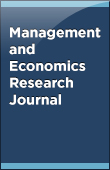
10.18639/MERJ.2020.990006
Short Communication
Apr 24, 2020
The development of a country can be measured by its ability to innovate. One of the spaces that potentialize the construction of knowledge are the so-called innovation habitats, which are characterized by a great amount of knowledge assets. In this scenario of innovation, incubators stand out as the focus of this study, since they are spaces that potentialize the construction of knowledge. This construction is facilitated by the adoption of a management model. The incubators, known as incubators of ideas, sustain a technology-based enterprise in the early years of its life, and these provide new jobs that generate economic warming. Portugal is a country that is investing in measures to implement policies that promote economic growth. Therefore, the objective of this paper is to propose a model to verify the construction of knowledge in business incubators for generating successful innovative enterprises, systematically and repeatedly leveraging new jobs, and providing solutions to Portugal’s economic policy. For such purposes, the methodologies used were the integrative review of the literature using the Scopus database, the analysis of regulations and international and national documents, and data collection from Brazilian and Portuguese incubators. As a result, CELTA (Business Center for Advanced Technologies) is presented—a model for verification of knowledge construction in incubators—that promotes the incubator’s ability to prospect and select good ideas in a successful manner and finally turn them into successful and profitable ventures. This model is built around five axes—entrepreneur, capital, management, market, and technology—and 21 guidelines. It can serve as a reference to verify the maturity of knowledge in incubators and other spaces recognized as innovation habitats.
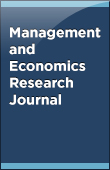
10.18639/MERJ.2020.1100554
Original Research Article
Apr 08, 2020
This paper investigated the long-run relationship between gross domestic product, access to electricity, and remittances within the multivariate framework in Kenya using the data for the period 1987-2018. The autoregressive distributed lag (ARDL) bounds test was used to investigate the long-run relationship. Causality between variables was investigated by use of the Granger causality method. The bounds test indicated that there is cointegration when gross domestic product, electricity access, and remittances are dependent variables. The long-run estimation of coefficients suggests that electricity access and remittances have significant positive impact on economic growth in Kenya in the sample period. Causality analysis provides evidence that there is unidirectional Granger causality running from gross domestic product to electricity access and not vice versa and from gross domestic product to remittances and not vice versa. There was no causality between remittances and electricity access. The policy implications of the paper suggest that the government and other companies concerned should enhance electricity access and encourage inflows of remittances as these contribute positively to economic growth in Kenya.